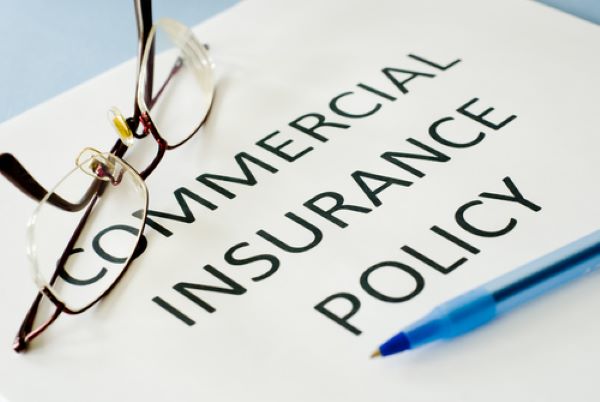 |
| By | July 1, 2023 |
If the rate increases for your car, home, or individual health insurance left you with sticker shock at the beginning of this year, you are not alone. Many Americans are still wrapping their heads around insurance rate increases when renewing their policy or paying their premiums.

The rise in insurance rates can largely be attributed to inflation. As the overall cost of goods and services in the market continues to climb, it directly affects the expenses associated with insurance claims. Consequently, policyholders face higher premiums as insurers strive to cover the increased costs. It’s an unfortunate situation that many individuals find themselves grappling with as they navigate the financial implications of these escalating rates.
On top of inflation, insurance companies face additional challenges that contribute to rate increases. Factors like the growing prevalence of cybercrime have added to the complexities and costs of the insurance industry. These additional challenges further compound the financial pressures faced by insurers, ultimately affecting the rates they offer.
Here is a more in-depth look at the main factors the insurance industry is dealing with and their impact on insurance rates.
What Are the Factors Increasing Insurance Rates?
The insurance industry has been experiencing unprecedented challenges, forcing companies to ramp up insurance rates across the board. Here are the main factors behind the rising rates in personal and commercial insurance:
Personal Insurance
Economic Conditions
Since the last part of 2022, economic factors have exerted a substantial influence on fluctuations in insurance rates. Rising inflation has emerged as the primary catalyst behind the escalation of insurance premiums, especially pertaining to personal lines premiums.
Looking ahead, the economic landscape is projected to be characterized by a sluggish growth trajectory and sustained high inflation. Consequently, household incomes are likely to endure ongoing strain, potentially resulting in adjustments to insurance premiums in order to accommodate the increased claims burden borne by insurers.
Changing Demographics
Shifting demographics are an additional catalyst for the surge in insurance rates. The baby boomer generation has exerted considerable strain on the healthcare sector, resulting in heightened healthcare expenses and subsequent increases in insurance premiums.
Concurrently, younger generations are opting for fewer children compared to previous generations, leading to historically low fertility rates. This demographic shift necessitates a reevaluation of insurance requirements, introducing novel and distinct coverage needs.
Driving Records
An individual’s personal driving record significantly influences their chances of obtaining more affordable car insurance rates. Insurance companies carefully evaluate the risk associated with insuring a driver by examining their past driving history. Instances like accidents, speeding tickets, or DUI convictions, along with other traffic violations, indicate a greater probability of future incidents. As a result, insurance providers perceive individuals with a history of such infractions as higher-risk policyholders, potentially leading to challenges in finding affordable car insurance coverage.
Commercial Insurance
Emerging Technologies
Emerging technologies such as autonomous vehicles and the Internet of Things (IoT) are introducing novel risks for companies and organizations, posing a challenge for insurers in terms of accurately assessing and providing coverage for these risks under commercial insurance.
This dynamic landscape necessitates innovative approaches from insurers to adapt their coverage policies and adequately protect businesses and organizations from the potential liabilities associated with these emerging technologies.
Catastrophe Losses
From a business perspective, the frequency and severity of hurricanes, floods, and wildfires will continue to strain the insurance industry’s reserves. Insurers are actively reassessing the risks associated with providing coverage in regions prone to catastrophes. As insurers adjust their rates to reflect the heightened risks and the impact on the cost of reinsurance, policyholders may experience notable increases in their insurance rates.
In response to the increased severities, insurance companies are also focusing on risk management strategies. This includes leveraging technology and data analytics to enhance underwriting practices, identifying high-risk areas, and implementing preventive measures to reduce potential losses.
Supply Chain Disruptions
Supply chain disruptions are wreaking havoc in the commercial insurance segment. These disruptions, fueled by factors such as covid-related challenges and surging consumer demand, have led to inflationary pressures and shortages of essential building materials
One of the main commercial insurance products affected by inflation is property and contingent business interruption insurance. Inflation drives up the costs of construction materials, labor, and property values, while supply chain disruptions affect the company’s production. As a result, insurers need to reassess these risks and adequately cover them.
Skilled Worker Shortages
The scarcity of qualified professionals in key roles poses increased risks for businesses, leading insurance companies to adjust their rates to account for these heightened exposures.
Professional and general liability insurance is one of the main segments affected by skilled worker shortages. The lack of skilled workers can increase the likelihood of workplace accidents and injuries. With fewer experienced individuals available to perform specialized tasks, businesses may face a higher risk of accidents due to human error or inadequate training.
How to Drive Your Rates Down
Insurance is an essential expense for most Americans. Whether you require auto, home, or health insurance, the prices can add up over time. Therefore, thinking outside the box and finding innovative ideas to drive insurance rates downward seems like a good approach. Here are some tips to reduce your insurance rates:
Shop Around
Just because you chose an insurance provider doesn’t mean you have to stick with them for the rest of your life. Shopping around and comparing prices from different providers with a reputable insurance broker can help you get a better deal.
Compare Deductibles
Make sure you compare deductibles when you compare quotes. If your premium is high, you may want to consider increasing your deductible. This could result in a lower premium, but you will have to pay more if you file a claim.
Bundle Your Car Insurance with Your Home Insurance
Consider bundling home and auto insurance. Most insurers offer discounts when you bundle two or more policies.
If you are considering changing your insurance policy because you can’t pay it anymore, our insurance pros can help you find the right insurance coverage that suits your budget. At Cell Brokerage, we can find you comprehensive personal and commercial insurance coverage tailored to fit your or your company’s unique needs. Contact us today to learn more about how we can protect you.









